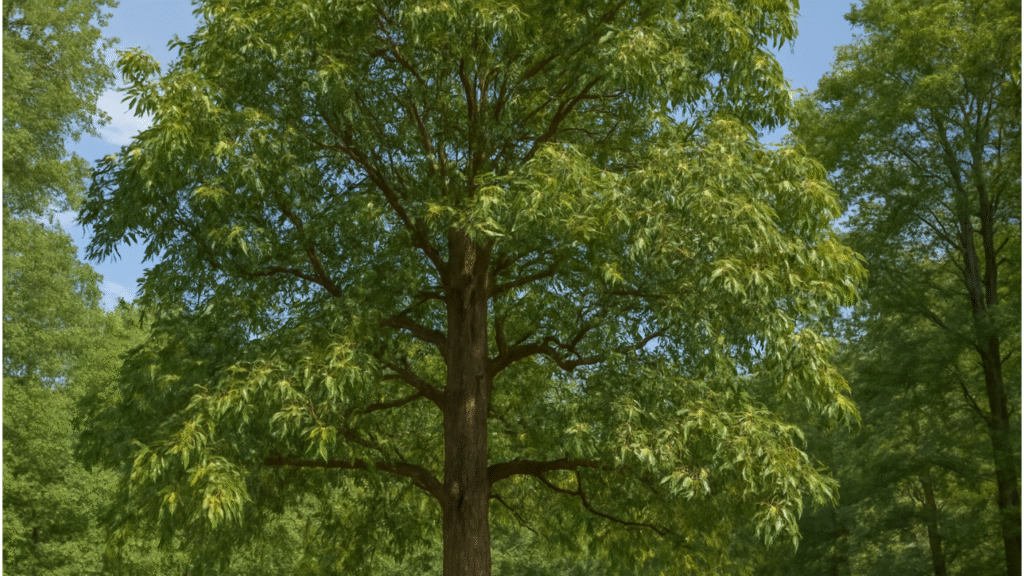
Do Hickory Trees Produce Nuts Every Year? Understanding Hickory Nut Production and What Affects It
Table of Contents
Toggle🌳 🌰 What Are Hickory Trees and Why Do They Produce Nuts? 🌰 🌳
Hickory trees 🌳 are some of the most impressive and sturdy trees 🌲 in North America, known for their tall stature 🏔️, strong wood 🪓, and delicious, hard-shelled nuts 🌰. These trees are part of the Carya genus 🌿 and can be found across many parts of the United States 🇺🇸, especially in forests with moist, well-drained soil 🌱. There are several species of hickory trees 🌳, including Shagbark, Shellbark, and Pignut hickory, each of which has its own characteristics and nut-producing habits 🌰.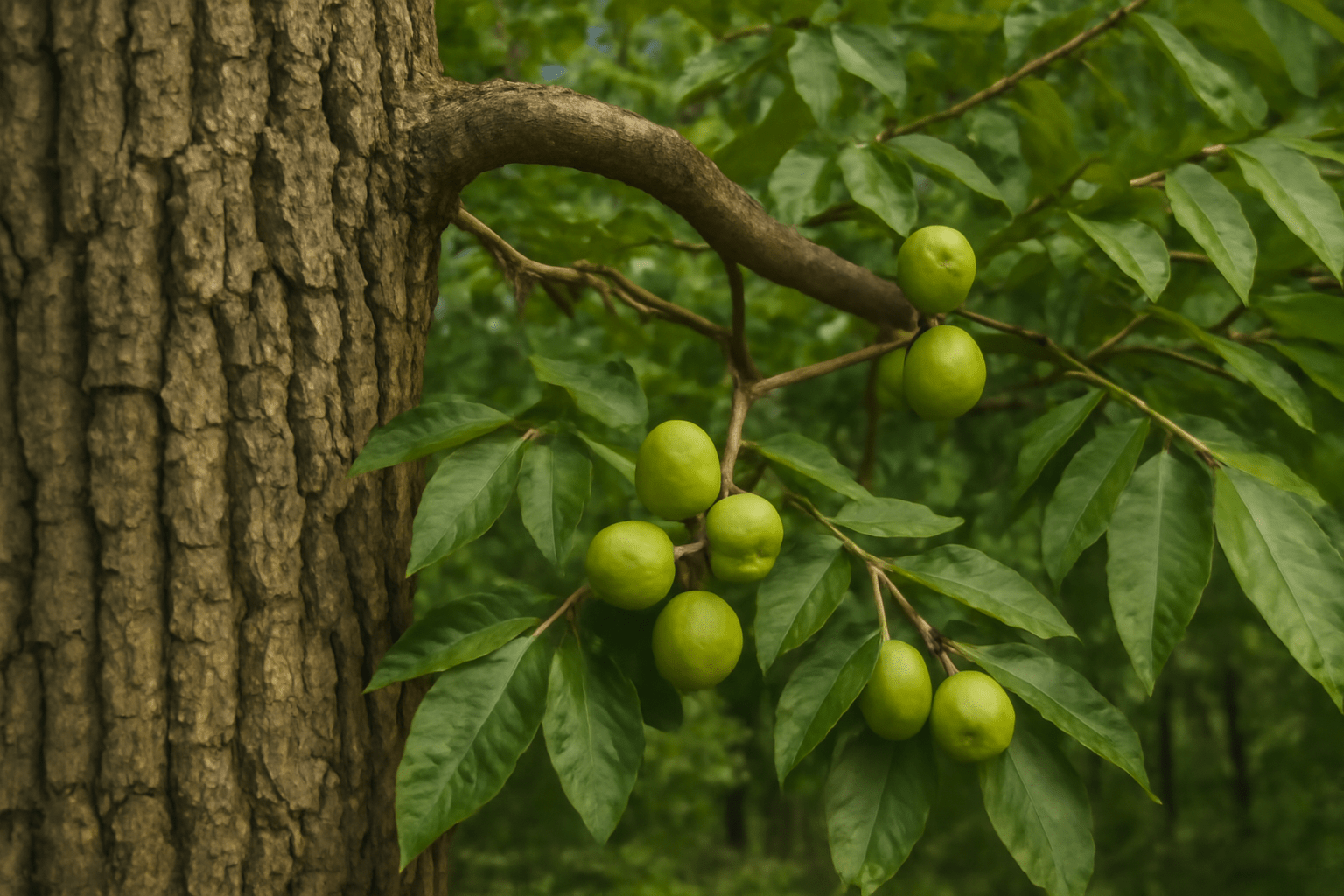
🍂 🌳 What Are Hickory Nuts? 🌳 🍂
Hickory nuts 🌰 are the edible seeds 🌱 produced by hickory trees 🌳. These nuts are enclosed in a tough outer shell 🛡️, which needs to be cracked open to reveal the tasty, rich nut inside 😋. The flavor is often compared to that of a walnut 🥜, but it’s even more distinct and savory 🧑🍳. Many wildlife species 🦔, like squirrels 🐿️ and birds 🦜, rely on hickory nuts as a key food source 🍂 during the fall 🍁 and winter months ❄️.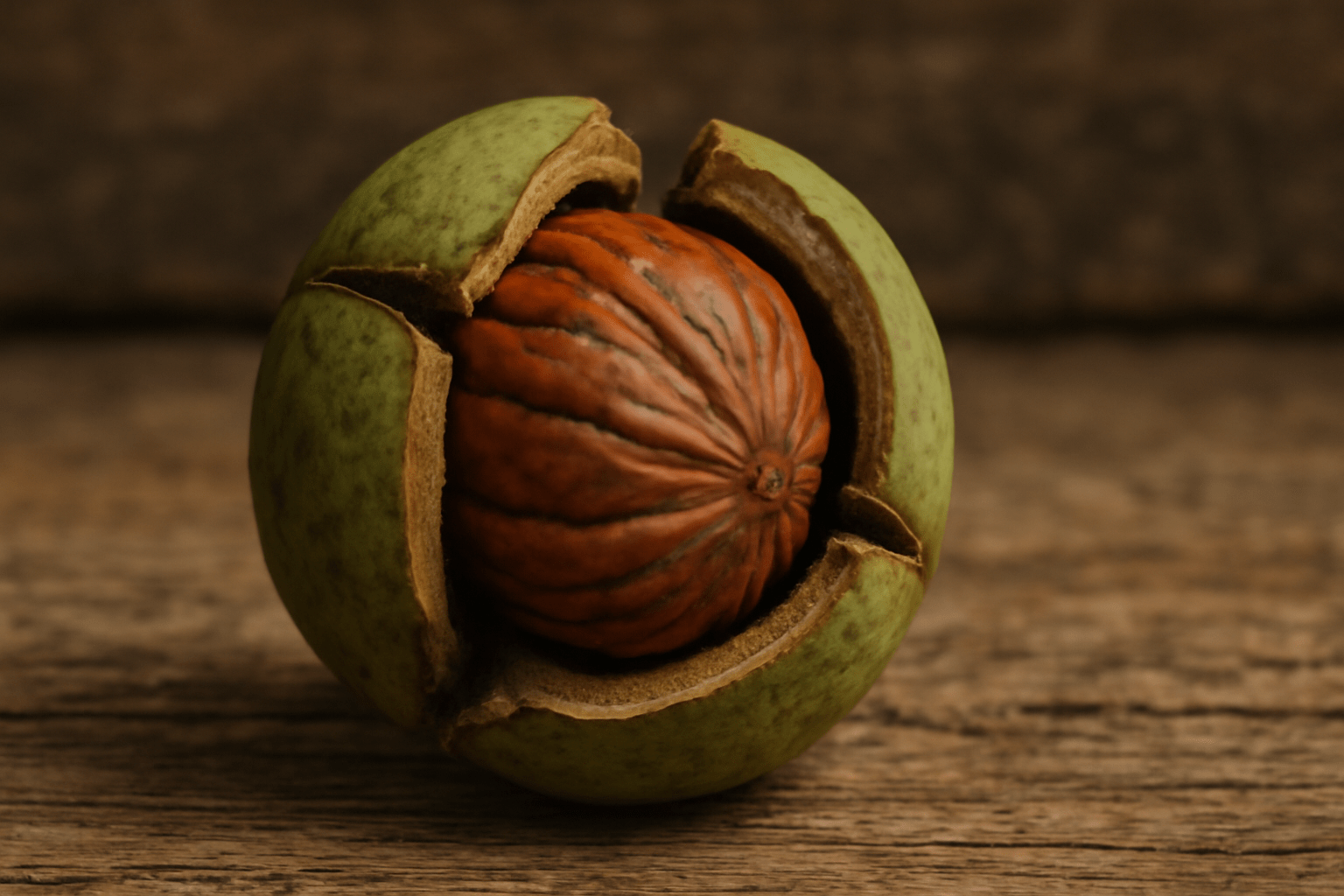
🌿 🌱 Why Do Hickory Trees Produce Nuts? 🌱 🌿
The primary reason hickory trees 🌳 produce nuts 🌰 is for reproduction 🌱. Just like other trees 🌳 that produce seeds or fruit 🍏, hickory trees use their nuts to spread their seeds 🌱 and grow new trees 🌲. The nuts 🌰 are their means of ensuring the survival of the species 🌍. When the nuts fall to the ground 🌍, some may germinate 🌱 and grow into new trees 🌳, continuing the cycle 🔄. But why do hickory trees 🌳 produce these nuts in the first place? In nature 🌿, nuts serve multiple purposes 🎯:- Food for Wildlife 🦔: Many animals 🦌 depend on hickory nuts 🌰 to survive, especially in the colder months ❄️. By producing nuts 🌰, hickory trees 🌳 support local ecosystems 🌎.
- Seed for Reproduction 🌱: The nut 🌰 is the vehicle 🚗 through which the tree’s genetic material 🧬 is passed on to future generations 👶. It’s nature’s way of ensuring the continuation of the tree species 🌳.
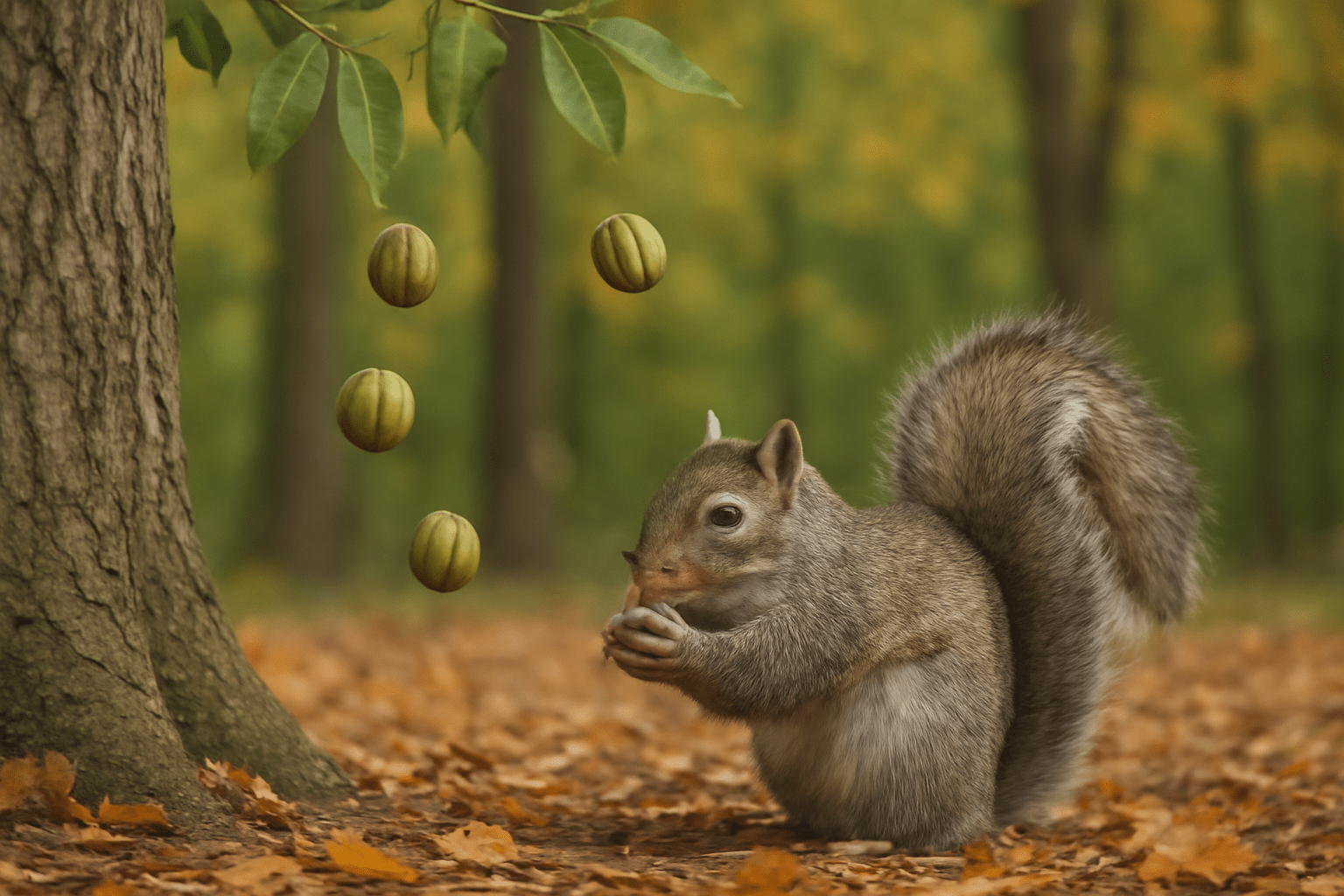
🌰 🌳 Do Hickory Trees Produce Nuts Every Year? Understanding the Cycles 🌳 🌰
Hickory trees 🌳 are fascinating in the way they produce nuts 🌰, but unlike some fruit trees 🍏 that bear crops annually, hickories typically follow a 2-year nut production cycle 🔄. This means that while one year may bring a bumper crop of nuts 🌰, the next year might be a lighter season—or sometimes, no nuts at all! Understanding this cycle is essential for managing expectations 🎯 and helping your tree thrive 🌿.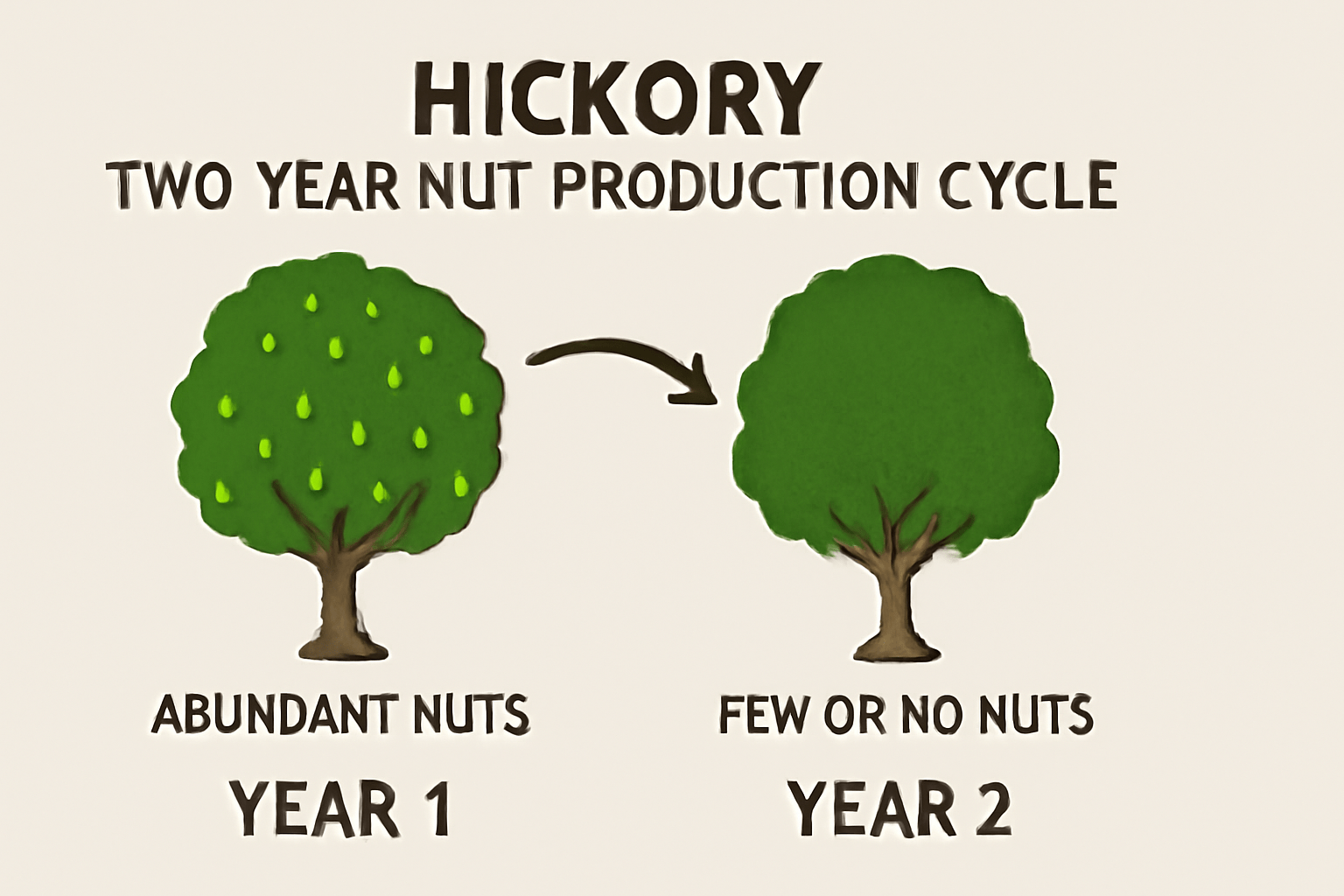
🌿 🌱 Nut Production Cycles of Hickory Trees 🌱 🌿
Hickory trees 🌳 don’t produce nuts 🌰 every single year, and this is completely natural 🍂. Instead, they generally follow a two-year cycle 🔄:- Year One: A bumper crop of nuts 🌰, often larger and more abundant 🎉.
- Year Two: A quieter year with fewer or no nuts at all ❌.
🌦️ 🌤️ Environmental Factors Impacting Nut Production 🌤️ 🌦️
Several environmental elements 🌍 play a significant role in determining whether or not a hickory tree 🌳 will produce a plentiful crop of nuts 🌰. Here are a few key ones:
🌧️ Weather Conditions 🌧️
Extreme weather events 🌪️ can have a direct impact on nut production 🌰. For example:- Droughts 🌵: If there isn’t enough rain 🌧️, the tree may struggle to produce healthy nuts 🌰.
- Heavy Rains 🌧️: Too much water 💦 can lead to poor nut development or even root rot 🌱, which affects the tree’s overall health 🏥.
- Cold Temperatures ❄️: Frost or extremely cold temperatures during the flowering season 🌸 can damage the tree’s ability to produce nuts 🌰.
🌱 Soil Quality 🌱
The soil 🌍 your hickory tree 🌳 grows in plays a huge role in its ability to produce nuts 🌰. Soil that’s rich in organic matter 🍂 and well-drained 🌬️ will encourage healthy growth. Here’s what you should focus on:- Nutrients 💪: A lack of essential nutrients like nitrogen 🌱, phosphorus 🌿, and potassium 🌾 can stunt growth and reduce nut yields 🌰.
- Soil pH ⚖️: Hickory trees 🌳 prefer slightly acidic to neutral soil 🌱. The right pH balance helps the tree absorb nutrients efficiently 🌱.
🌳 🌿 Tree Health and Growth Patterns 🌿 🌳
The health and age 🕰️ of a hickory tree 🌳 are critical when it comes to nut production 🌰: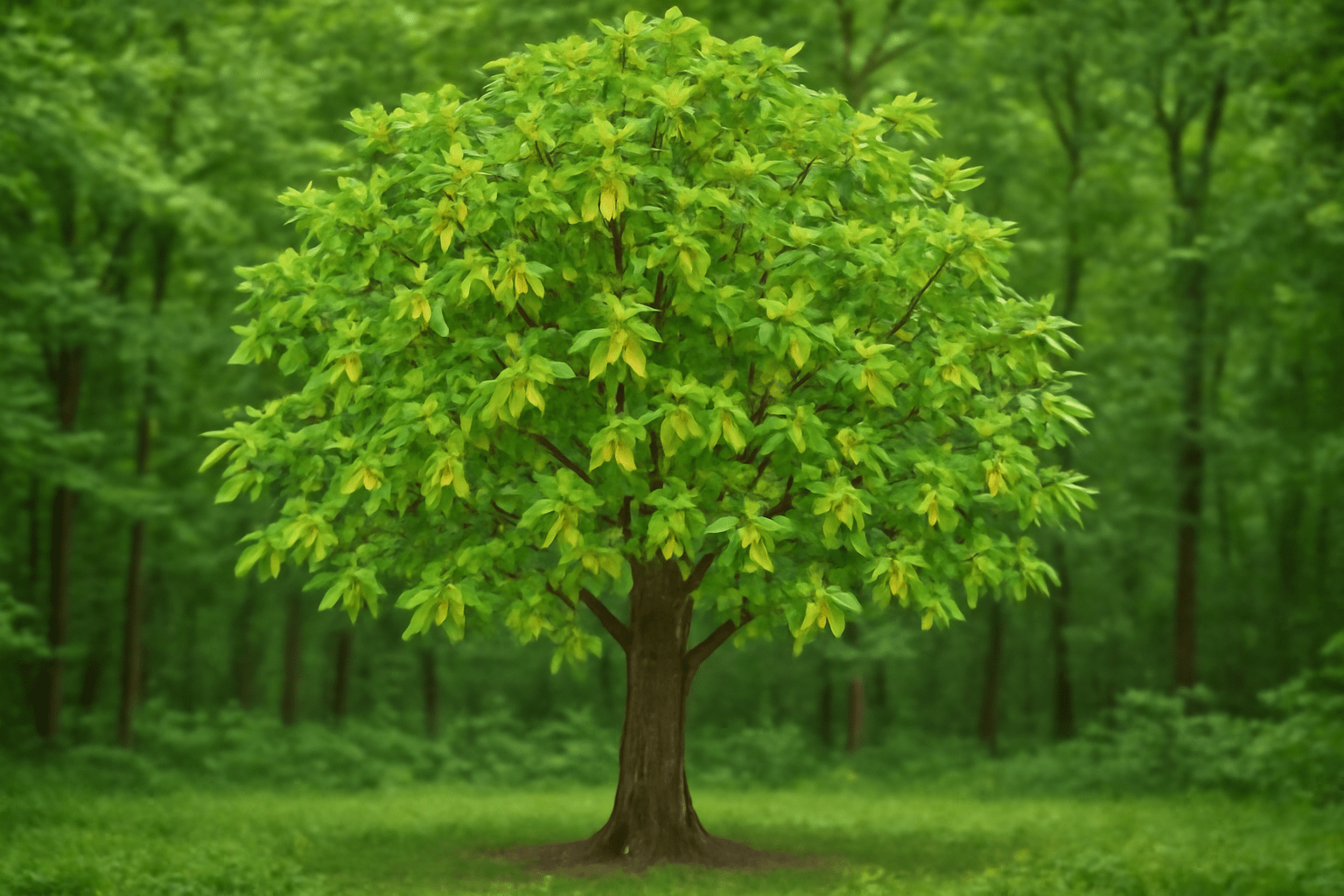
🏞️ Tree Age 🏞️
Younger hickory trees 🌳 may not produce nuts 🌰 until they reach a certain maturity—usually around 20 years old 🎂. Older trees 🌳, however, tend to produce better and more frequent nut yields 🌰, especially if they’ve been well-maintained 🌱.🦠 Stress Factors 🦠
Stress from pests 🐞, diseases 🦠, or physical damage 🏚️ can cause a hickory tree 🌳 to produce fewer nuts 🌰. Here are some common stress factors:- Pests 🐛: Insects like hickory borers 🪲 can weaken the tree and reduce its ability to produce nuts 🌰.
- Diseases 🦠: Fungal infections 🍄 or root rot 🌱 can harm the tree 🌳, affecting its overall health 🏥 and nut production 🌰.
- Physical Damage ⚡: Storms 🌪️, pruning mistakes ✂️, or even injury from nearby construction 🏗️ can cause stress, leading to a poor nut crop 🌰.
🌳 🌰 Key Factors That Affect Hickory Nut Production 🌰 🌳
Hickory trees 🌳 are quite resilient 💪, but like any living organism 🌱, their ability to produce nuts 🌰 depends on a range of factors. Understanding these key factors is crucial 🔑 for ensuring your hickory tree thrives 🌿 and produces a healthy crop of nuts 🌰. Let’s dive into the most important elements that influence hickory nut production 🌳.🌦️ 🌞 1. Climate and Weather Conditions 🌞 🌦️
The climate 🌦️ plays a significant role in whether or not hickory trees 🌳 will produce nuts 🌰 in any given year 📅. Here are the critical climatic factors that impact nut development 🌰:🌱 Optimal Growing Conditions for Hickory Trees 🌱
Hickory trees 🌳 thrive in temperate climates 🌤️ with mild summers ☀️ and winters ❄️. They need a decent amount of sunlight ☀️ to grow but prefer areas where the temperatures don’t exceed extremes 🌡️. Ideal growing conditions include moderate rainfall 🌧️ and well-drained soils 🌍.🌦️ How Temperature and Rainfall Influence Nut Development 🌦️
- Temperature 🌡️: Hickory trees 🌳 require specific temperature ranges for their buds 🌱 to form and nuts 🌰 to mature. Extreme heat 🔥 or unexpected frost ❄️ can halt the development of nuts 🌰, especially during the flowering 🌸 and early nut formation stages.
- Rainfall 🌧️: While hickory trees 🌳 do need a good amount of moisture 💧, excessive rainfall 🌧️ can lead to root rot 🪱, and too little rainfall 💦 during the growing season 🌱 can stress the tree 🌳 and reduce nut production 🌰.
🌍 Effects of Climate Change on Long-term Nut Production Patterns 🌍
Climate change 🌍 is altering weather patterns, leading to unpredictable seasons 📅 with extreme weather conditions 🌪️. These shifts can affect hickory nut cycles 🔄, leading to irregular yields 🌰 or even crop failures in certain years 😞.🌱 🌳 2. Tree Health and Care 🌳 🌱
A well-maintained hickory tree 🌳 is more likely to produce nuts 🌰 consistently. Here’s how proper care can make a big difference 🧑🌾:🪴 Proper Tree Maintenance 🪴
Keeping your hickory tree 🌳 healthy ensures better yields 🌰. Regular pruning ✂️ helps remove dead or damaged branches 🌿 and allows the tree to focus energy ⚡ on nut production 🌰. Additionally, proper pest control 🦠 and disease management 🧴 can protect the tree from common issues like hickory borers 🪲 or fungal infections 🍄.🌿 Impact of Environmental Stress on Nut Production 🌿
Stressors 🌵 such as drought 🌞, excessive heat 🔥, or pollution 🌫️ can weaken a tree 🌳 and reduce its ability to produce nuts 🌰. For example, if a tree is stressed 😰, it might drop its nuts early 🌰, or the nuts might not fully mature 🕰️. Managing environmental stress 🌳 is crucial to improving nut yields 🌰.🌿 🌍 3. Soil and Water Management 🌍 🌿
Good soil 🌍 and water management 💧 are vital for the overall health of hickory trees 🌳 and their ability to produce high-quality nuts 🌰.🌱 Importance of Good Drainage and Proper Irrigation 🌱
Hickory trees 🌳 need well-drained soil 🌍. Poor drainage 🚫 can lead to root rot 🪱, which affects the tree’s growth 🌳 and ability to produce nuts 🌰. Similarly, while the tree 🌳 needs water 💧, over-watering 💦 can be just as harmful 🚫. A balance ⚖️ is key—irrigate when necessary 🌧️, especially during dry spells 🌵, but ensure the water 💧 doesn’t sit around the roots for too long ⏳.🌾 Ensuring the Soil is Rich in Nutrients and Well-Aerated 🌾
Hickory trees 🌳 prefer soils rich in organic matter 🍂. To promote healthy growth 🌱 and nut production 🌰, make sure the soil is well-aerated 🌬️ and contains the right mix of nutrients 🧪. Regular soil tests 🧫 can help you understand what’s lacking ❌ and allow you to amend the soil accordingly 🔧.🌳 🌱 4. Age and Maturity of the Tree 🌱 🌳
The age 🕰️ and maturity of a hickory tree 🌳 greatly influence its ability to produce nuts 🌰. Here’s what you need to know:🧑🌾 How Young Hickory Trees Produce Nuts vs. Older, More Established Ones 🧑🌾
Young hickory trees 🌳, typically under 20 years old 🎂, may not produce nuts 🌰 or might produce only a small amount 🍂. Nut production 🌰 increases with tree maturity 🕰️. Older, well-established hickory trees 🌳—around 40 years or older 🧓—will generally produce more abundant 🌰 and higher-quality nuts 🌰.🌿 Why Nut Production May Be Sparse or Nonexistent in Younger Trees 🌿
Younger hickory trees 🌳 may not have fully developed the necessary structures 🏗️ for nut production 🌰. Additionally, if a tree 🌳 is too young or stressed 😔, it may not have enough energy ⚡ to produce nuts 🌰. It’s important to be patient ⏳ and provide the tree 🌳 with proper care 🧑🌾, as it may take time 🕰️ for the tree 🌳 to reach a stage where it can reliably produce nuts 🌰. To maximize hickory nut production 🌰, it’s essential to focus on maintaining optimal climate conditions 🌦️, tree health 🌱, proper soil 🌍 and water 💧 management, and allowing your tree 🌳 to reach maturity 🕰️. By understanding and managing these factors 🔄, you can ensure that your hickory tree 🌳 has the best chance to produce a bountiful crop 🌰 of delicious nuts! 🌰🌰 🌳 How to Tell if Your Hickory Tree Will Produce Nuts This Year 🌳 🌰
If you have a hickory tree 🌳 in your yard, you’re probably eager to know if it’s going to produce nuts 🌰 this year. The good news is, with a little observation 👀 and understanding 🧠, you can identify the signs that your tree 🌳 is preparing for a successful nut harvest 🌰. In this section, we’ll explore how to spot early indicators 🔍 of nut production and tackle common problems ⚠️ that could prevent your tree 🌳 from producing nuts 🌰.🌿 🌱 Signs of Nut Production 🌱 🌿
Knowing the early signs 🔍 of nut production 🌰 can help you predict whether your hickory tree 🌳 will produce a healthy crop of nuts 🌰 this year. Here’s what to look out for:
🌱 Spotting Buds or Early Indicators of Nut Formation 🌱
In the spring 🌸, as the weather warms up 🌞, hickory trees 🌳 begin to prepare for nut production 🌰. Look for small buds 🌱 forming on the tree’s branches 🌳. These buds will eventually bloom into flowers 🌸, which are the first step in nut development 🌰. You’ll typically see:- Male catkins 🌿: Long, hanging clusters of flowers 🌸 that will release pollen 🌾.
- Female flowers 🌺: Smaller, often hidden among the leaves 🍃, which will eventually develop into nuts 🌰.
🍂 When to Expect Mature Nuts 🍂
If everything goes well 🌱 and the tree’s conditions are optimal 🌳, mature hickory nuts 🌰 will start to appear in late summer ☀️ or early fall 🍁, typically from August to October 🍂. You’ll notice the nuts 🌰 beginning to drop from the tree 🌳 when they are ready 🔴.🧐 Differentiating Between Viable and Non-Viable Nuts 🧐
- Viable Nuts 🌰: These will have a hard outer shell 🛡️ and a mature, full-sized nut inside. When you crack open a viable nut 🥜, it will have a firm, well-formed kernel 🌰.
- Non-Viable Nuts 🛑: Sometimes, trees 🌳 will produce empty or underdeveloped nuts 🌰. These will often be smaller, misshapen, or might feel light when you shake them 🕺. The nut inside will either be absent 🚫 or poorly developed 🧑🔬.
🌳 🌿 Common Problems and Their Solutions 🌿 🌳
Even if your hickory tree 🌳 looks healthy 🌱, there could be factors preventing it from producing nuts 🌰. Here’s a look at some common issues 🚨 and how to address them 💡: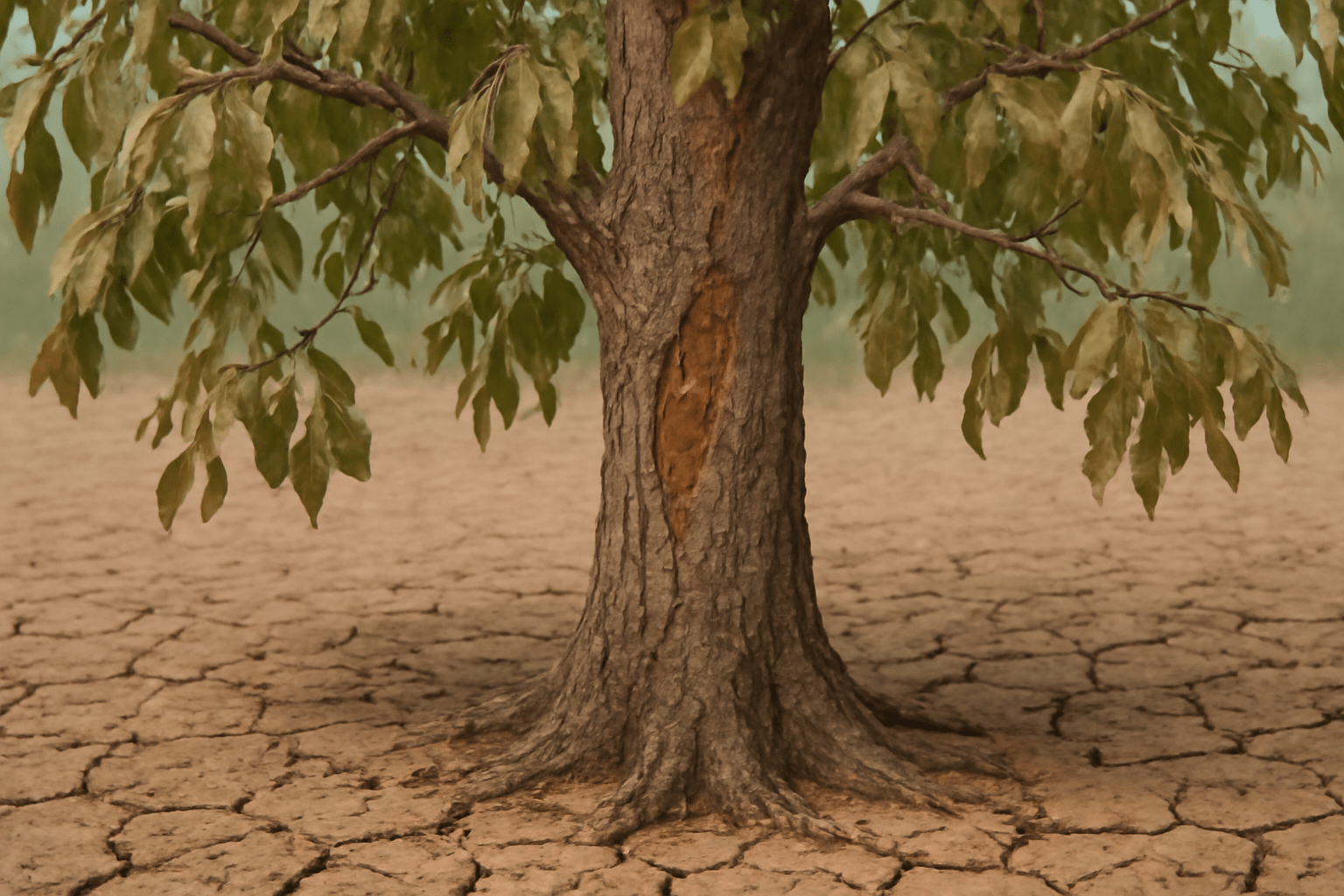
🚫 Lack of Nuts: Why Your Tree Might Be Failing to Produce Nuts 🚫
If your tree 🌳 isn’t producing nuts 🌰 this year, don’t panic 😟. Here are some potential reasons:- Young Tree 🌱: As mentioned earlier, younger hickory trees 🌳 (under 20 years old 🎂) may not be mature enough to produce nuts 🌰.
- Environmental Stress 🌵: Drought 🌞, excessive rainfall 🌧️, or poor soil quality 🌍 can all impact the tree’s ability to develop nuts 🌰.
- Poor Pollination 🐝: If your tree 🌳 didn’t get enough pollen from male flowers 🌸, the female flowers 🌺 might not develop into viable nuts 🌰. This could happen due to poor weather 🌧️ during the flowering period 🌸 or the lack of nearby hickory trees 🌳 to assist in pollination 🌼.
💡 Solution:
Ensure that your tree 🌳 is healthy 💪 and in the best environment possible 🌿. If it’s a young tree 🌱, be patient ⏳. For older trees 🌳, improve soil quality 🌍, maintain proper watering 💧, and ensure the tree 🌳 is not exposed to environmental stress 🌞.🐛 Preventing Pest Damage 🐛
Pests 🦠 can be a major threat ⚠️ to your tree’s ability to produce nuts 🌰. One common pest 🐞 that affects hickory trees 🌳 is the hickory borer 🪲, which attacks the tree 🌳 and disrupts its growth 🌱. Other pests 🦗 include aphids 🐜 and scale insects 🐛, which can damage leaves 🍂 and flowers 🌸, reducing the tree’s ability to produce nuts 🌰.💡 Solution:
To protect your hickory tree 🌳 from pests 🦠, consider these steps 📝:- Prune Dead or Damaged Branches ✂️: This helps reduce places where pests 🦗 can hide.
- Use Insecticidal Soap 🧴: If pests 🦗 like aphids 🐜 are present, an insecticidal soap 🧴 can help manage the population 🐞.
- Monitor for Signs of Borer Damage 🧐: Look for holes 🔲 in the bark and sawdust-like material 🪵 at the base of the tree 🌳. If you spot any damage 💥, act quickly by using proper treatments 🧴 or consulting an arborist 👨🌾.
🌳 🌰 Can You Encourage Hickory Trees to Produce Nuts Every Year? 🌰 🌳
While hickory trees 🌳 are naturally inclined to follow a 2-year nut production cycle 🔄, there are steps you can take to encourage better yields 🌰 and, in some cases, more consistent nut production 🌰. In this section, we’ll explore how you can enhance your tree’s ability to produce nuts 🌰 and what to do if your tree 🌳 isn’t producing regularly 📅.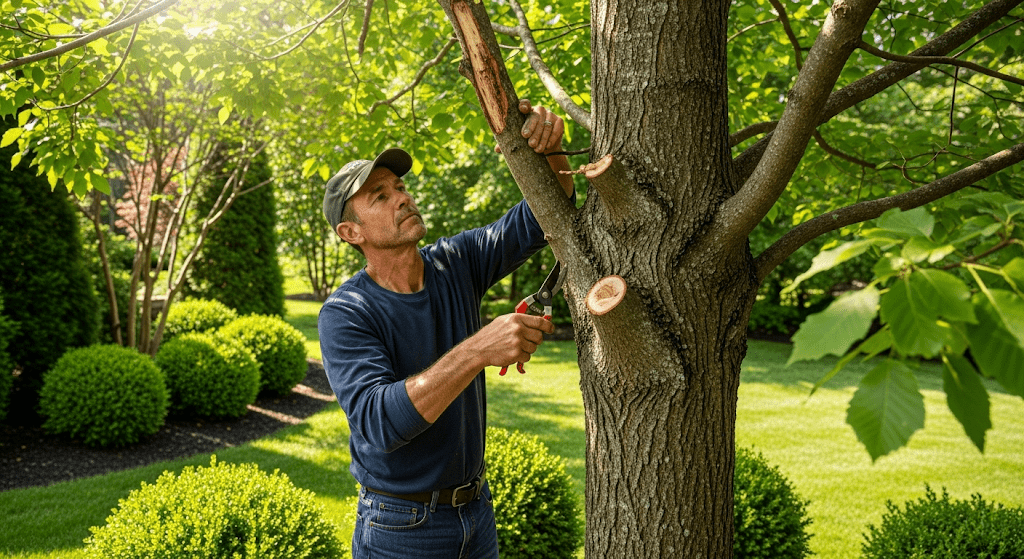
🌿 🌱 Enhancing Nut Production with Proper Tree Care 🌱 🌿
To improve your chances of hickory nut production 🌰, proper tree care 🌳 is essential 🔑. Healthy trees 🌳 are more likely to produce nuts 🌰, and managing environmental stressors 🌦️ can ensure that your tree 🌳 thrives throughout the growing season 🌱. Here’s how you can encourage better nut production 🌰:🌱 Fertilization and Soil Amendments: Best Practices for Improving Soil Health 🌱
A well-balanced, nutrient-rich soil 🌍 is key to promoting healthy tree growth 🌳 and maximizing nut production 🌰. Here are a few tips:- Fertilize with Balanced Nutrients 🌿: Use a slow-release fertilizer with a balanced N-P-K (nitrogen, phosphorus, potassium) ratio 🧪 to promote strong root growth 🌱 and healthy nut development 🌰.
- Soil Testing 🧫: Perform a soil test 🧪 to determine any nutrient deficiencies and adjust accordingly 🔧. This can help ensure the tree 🌳 has what it needs to produce nuts 🌰.
- Add Organic Matter 🍂: Compost or well-rotted manure 🐄 can improve soil structure 🏞️, promote microbial activity 🔬, and enhance water retention 💧. This creates a better environment for your hickory tree 🌳 to thrive 🌱.
✂️ Pruning Tips for Healthier Growth and Better Nut Yields ✂️
Proper pruning ✂️ not only helps maintain the tree’s shape 🪴 but also improves its overall health 💪, making it more productive 🌱:- Remove Dead or Damaged Wood 🍂: This reduces stress on the tree 🌳 and helps direct energy ⚡ toward healthy growth 🌱.
- Thin the Crown 🌳: Light pruning ✂️ to reduce the density of branches 🌿 allows more sunlight 🌞 to reach the leaves 🍃 and improves airflow 🌬️, reducing the risk of disease 🦠.
- Avoid Over-Pruning 🚫: Prune only when necessary to avoid stressing the tree 🌳. Over-pruning can hinder nut production 🌰 by limiting energy reserves 💡.
💧 How to Manage Stress Factors: Keeping Trees Healthy During Droughts or Extreme Weather Conditions 🌪️
Stress 😓 can significantly impact a hickory tree’s ability to produce nuts 🌰. Here’s how to help your tree 🌳 during tough conditions:- During Droughts 🌞: Make sure your tree 🌳 gets adequate water 💧, but avoid waterlogging the roots 🪴. Drip irrigation 💧 is an excellent method to ensure deep, consistent watering 🌱.
- During Extreme Weather 🌪️: Protect the tree 🌳 from strong winds 🌬️ or frost damage ❄️ by providing temporary covers 🏠 or shelters 🌲. Additionally, apply mulch 🌿 around the base of the tree 🌳 to retain moisture 💧 and regulate soil temperature 🌡️.
🌿 🌰 Alternatives: If Your Hickory Tree Won’t Produce Nuts Regularly 🌰 🌿
Despite your best efforts, sometimes a hickory tree 🌳 might not produce nuts 🌰 regularly, or it may fail to produce nuts 🌰 altogether. Here’s why that may happen and what you can do about it:🧐 Why Some Trees Might Never Produce Nuts, and What to Do About It 🧐
There are several reasons a hickory tree 🌳 might never produce nuts 🌰:- Immature Tree 🌱: As mentioned earlier, young hickory trees 🌳 (under 20 years old 🎂) may take years ⏳ before they start producing nuts 🌰.
- Unfavorable Growing Conditions 🌍: If the tree 🌳 is in a location with poor soil 🪴, excessive water 💦, or inadequate sunlight 🌞, it may not have the energy 💡 to produce nuts 🌰.
- Genetic Factors 🧬: Some hickory tree varieties 🌳 may naturally produce nuts 🌰 less frequently than others 🌱.
💡 Solution:
If your tree 🌳 is young 🌱, be patient ⏳. If it’s mature 🌳 but still not producing 🌰, assess its environment 🌍 and care routine 🧑🌾. Make sure it’s well-nourished 🧬 and not stressed by pests 🦠, diseases 🦠, or adverse weather 🌦️.🌰 Other Tree Species That Produce Nuts More Reliably Every Year 🌰
If you’re looking for a tree 🌳 that will produce nuts 🌰 reliably each year 📅, consider planting other species 🌱 that are known for more consistent nut production 🌰. Some alternatives include:- Black Walnut Trees 🌰: Known for producing nuts 🌰 annually, black walnuts 🌰 are a great option for those who want a dependable nut-bearing tree 🌳.
- Pecan Trees 🌰: Pecans, another member of the hickory family 🌳, tend to produce nuts 🌰 every year 📅, especially when well-cared for in the right environment 🌱.
🌳 🌰 Final Thoughts 🌰 🌳
Hickory trees 🌳 are beautiful, robust trees 🌱 that provide not only shelter 🏠 and shade 🌞 but also delicious, nutritious nuts 🌰. While hickory trees 🌳 typically follow a 2-year nut production cycle 🔄, understanding the factors that influence their nut-bearing patterns 🌰 can help you manage expectations 🎯 and encourage better yields 🌰. From ensuring optimal soil conditions 🌍 and proper pruning ✂️ to managing environmental stress 🌦️ and pests 🦠, taking care of your hickory tree 🌳 can make all the difference in promoting healthy nut production 🌰. If your hickory tree 🌳 isn’t producing nuts 🌰 regularly, be patient ⏳. Young trees 🌱 may take years 🕰️ to mature, and environmental factors 🌍 can sometimes interfere with nut development 🌰. By following the tips 💡 shared in this article 📚, you’ll be better equipped to nurture your tree 🌳 and create the best possible conditions 🌱 for a bountiful crop 🌰.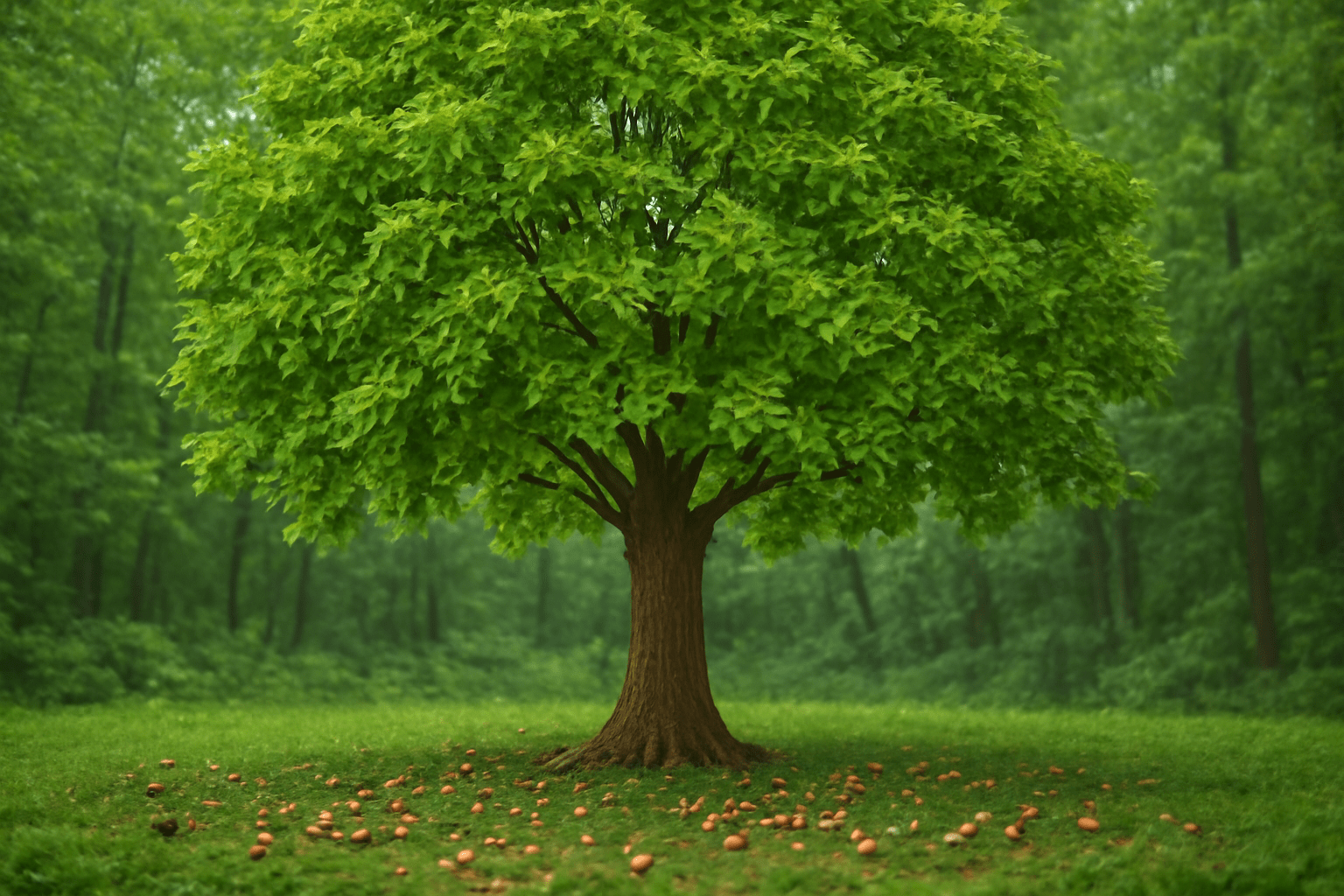
Frequently Asked Questions (FAQ)
Do all hickory trees produce nuts every year?
No, hickory trees typically follow a 2-year cycle for nut production. This means one year may bring a large crop of nuts, while the following year might have little to no nuts. This natural cycle helps the tree conserve energy during off-years.
What factors affect hickory nut production?
Several factors influence nut production, including weather conditions, soil quality, tree age, and overall tree health. Droughts, heavy rains, poor soil, and pest infestations can all hinder nut development and yield.
How can I tell if my hickory tree will produce nuts this year?
Look for early buds and flowers in spring, which indicate the beginning of nut formation. If you see mature nuts forming by late summer, your tree is on track for a harvest. Keep an eye out for healthy growth and fewer signs of stress.
Why isn't my hickory tree producing any nuts?
If your tree isn’t producing nuts, it may be too young (under 20 years old) or stressed due to poor soil conditions, pests, or extreme weather. Make sure your tree is well-cared for with proper watering, pruning, and pest management.
What are the signs of a viable hickory nut?
Viable hickory nuts will have a hard outer shell and a well-formed nut inside. When cracked open, the nut should be firm and fully developed. Non-viable nuts are often small, light, or misshapen and may lack a fully formed kernel.
How do weather conditions affect hickory nut production?
Extreme heat or cold, drought, and irregular rainfall can all impact nut production. For instance, frost during flowering or prolonged dry spells during the growing season can reduce or even prevent nut formation.
What should I do if my hickory tree is damaged by pests?
To protect your hickory tree from pests like hickory borers, regularly inspect the tree for signs of damage such as holes in the bark or sawdust. Use insecticidal soap or consult an arborist to treat infestations early, ensuring the tree remains healthy enough to produce nuts in the future.
Can I make my hickory tree produce nuts every year?
Unfortunately, you can’t make a hickory tree produce nuts every year since they naturally follow a 2-year cycle. However, proper tree care, such as fertilizing, pruning, and managing stress, can improve overall tree health and yield in the productive years.
